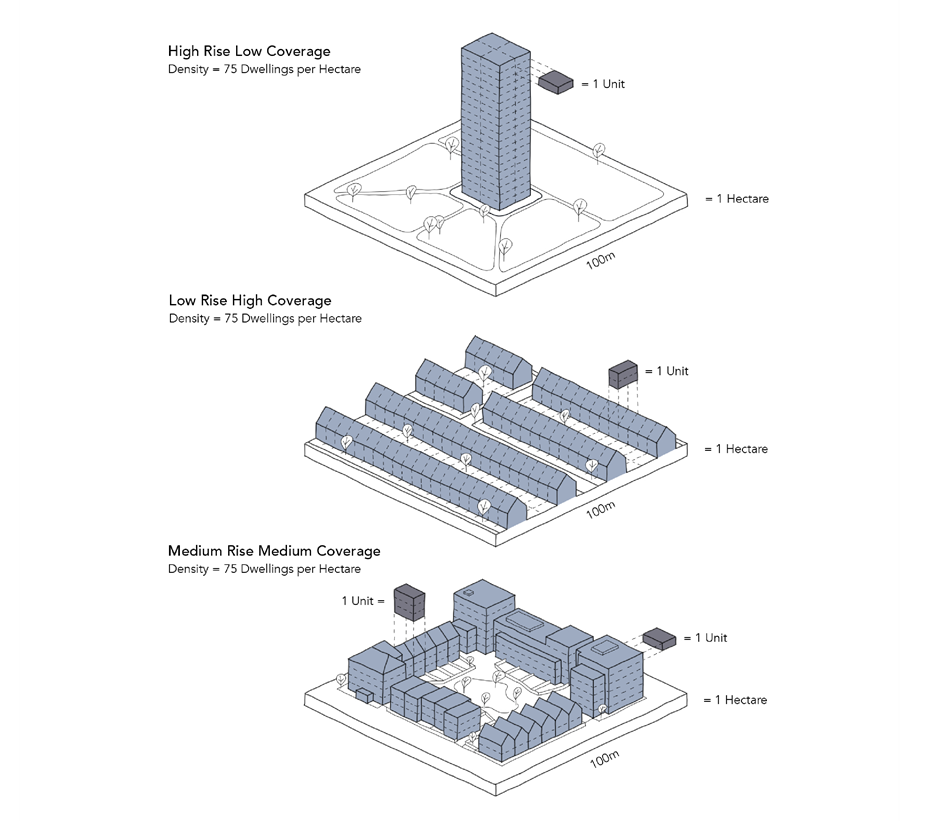Higher Density Development
Higher density development above all else needs to be in the right location. Whether the development is within an existing urban centre, within proximity to sustainable transport links or is of a scale that can support a sustainable mix of densities, uses and services, location is key. It is important to concentrate employment and housing close to the centre of existing urban areas and neighbourhoods so that it is possible to reduce our dependency on the car and encourage linked trips on foot or cycle. In new communities, it is important to balance the mix of densities to benefit from the services and facilities that development can bring. Co-locating the right mix of residential development with community facilities which have access to sustainable travel alternatives and green infrastructure/open space. The following guidance includes a summary of the main opportunities, benefits and issues faced when planning for higher density development and the impact density has on place making.
High density does not to mean high-rise towers. Sustainable neighbourhoods use density to create intensity of public space, enlivening the streetscape by creating desirable spaces that engender strong communities.
Points to consider
- What is the context of the site?
- What is the sites proximity to sustainable modes of transport?
- Is the site a new community or within an existing urban context?
- What is the target density of the scheme?
- What range of uses are possible?
- What are the individual and cumulative impacts of development?
- Are there any impacts on local and wider views?
- Have health and wellbeing measures been incorporated using the HIA guidance?
- What carbon reduction measures should be incorporated into the development?
- What provision of greenspace and biodiversity should be delivered on the site?
- How should public space, including car parking, created by the scheme be managed?
- Can the scheme deliver additional environmental benefits?
- What mix of tenure is desirable to meet local needs?
- What shared facilities could be included within the site?
- What facilities for access to bus services are needed
- Has air quality been appropriately addressed?
Some questions to ask
Development criteria for high density development in existing urban areas:
Spatial criteria
Proximity of the development site to sustainable modes of transport, how can we best quantify this? (see current Parking Standards)
Addressing the context
How can we assess the development potential of a site against the existing context? Should context be prioritised against modal shift to sustainable transport?
Provision of amenity
The most successful high-density developments are those which provide well designed internal and external public and private spaces. What does best practice look like?
Development criteria for high density development in new communities:
Scale of development
What is the volume of new development within a single site area? Larger sites have greater opportunities to provide a range of densities, across a range of house typologies including higher density local centres.
Mix of use
New communities should aim to include a balanced mixed of uses including retail, commercial, education and leisure. Residential provision should include a range of dwelling types for a variety of users.
Provision of amenity space
New communities have unique opportunities to provide integrated GI and amenity spaces. A greater provision of community open spaces can help offset the need to provide higher levels of private amenity space.
Page updated: 28/03/2025
